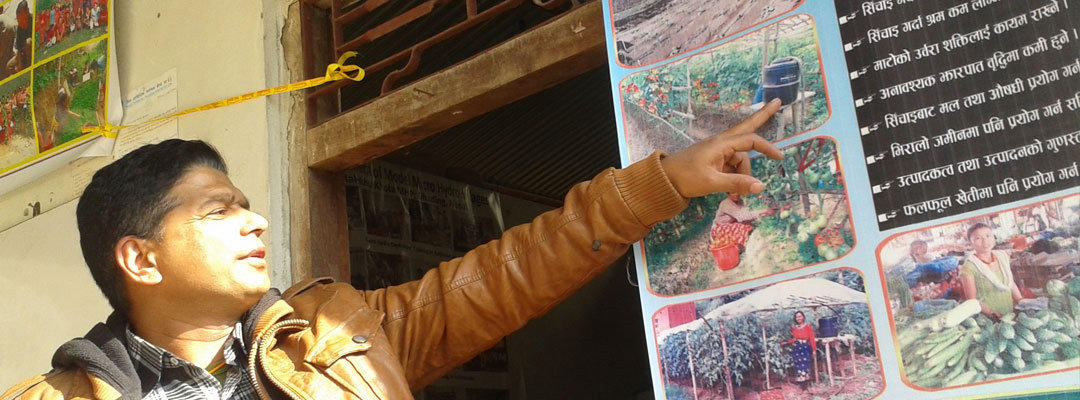Sital Thopa Sichai has been producing, assembling and marketing low-cost and simplified drip-irrigation technology as an appropriate solution adapted to the needs and resources of small farmers. The low-cost, simple drip irrigation system also known as a non-conventional micro irrigation technology was developed in Nepal by IDE Nepal (International) in 1994 with the financial support extended by SNV on the basis of drip irrigation action research grant proposal submitted by R.S. Bista, the then Nepali country Director of IDE Nepal . Conventional drip irrigation technology, which is widely used in advanced countries, was first pioneered by Israel. But the technology is too expensive for small farmers of poor countries. As a result, it was not widely used by the poor who needed a better solution. As such, in Nepal conventional drip irrigation system has been modified to adapt to the needs of small farmers of the water scarce hill districts of Nepal. While designing low-cost simple drip systems for small farmers in Nepal, care has been taken to ensure that the problem of clogging of the holes does not arise. Drip systems use a very low cost baffle that regulates water flow and makes de-clogging easy. They release water directly to plants’ roots, minimizing evaporation and seepage losses.
Micro irrigation technologies manufactured by STU include drip and micro sprinkler (both connected through pipes to a bucket kit) that are connected to existing community water supply systems or harvesting tanks. Drip irrigation is an artificial water saving method of irrigation. It ensures efficient use of water by allowing water to drip slowly to the roots of plants, either onto the soil surface or directly onto the root zone, through a network of valves, pipes, drippers and emitters. Unlike surface and sprinkler irrigation, drip irrigation only wets part of the soil root zone. This may be as, low as 80% of the volume of soil wetted by the other methods. The wetting patterns which develop from dripping water onto the soil depend on discharge and soil.
Drip is also one of the efficient means of fertilizer application to crops. Besides saving water, drip irrigation allows fertilizers to be mixed with the water and slowly dripped into the soil giving ample time for roots to absorb them.

